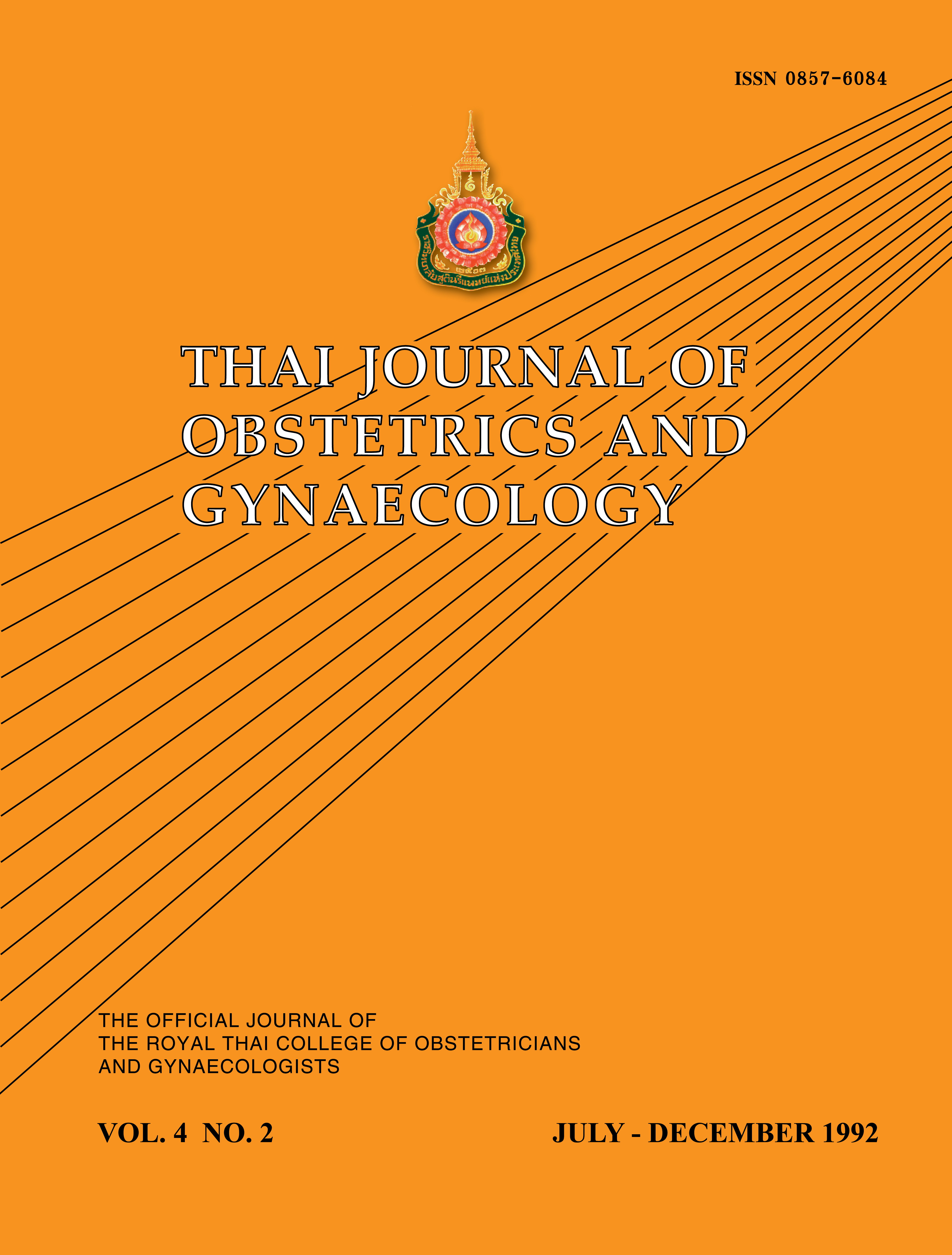New Rapid Test for Antepartum Assessment of Fetal Well-being
Main Article Content
Abstract
Maternal perception of sound-provoked fetal movement test was studied on 2115 occasions in 1740 women with obstetric or medical antenatal risk factors after 26 weeks gestation. The response was compared with a nonstress test (NST) performed immediately after a three-second vibroacoustic stimulation with an electronic artificial larynx. A positive response to sound stimulation, recorded as a fetal movement by the mother, occurred on 2095 occasions (99.1%) and was ac companied by a reactive NST on 2071 occasions; giving a specificity of 99.7% and a negative predictive value of 98.8%. An inconclusive or negative response to sound (0.9%) had a sensitivity of 38.4% and a positive predictive value for a nonreactive NST of 75.0%. Results of sound-provoked fetal movement test and NST, performed within a week of delivery, in 1732 women were compared with fetal outcome. The maternal perception of sound-provoked fetal movement test had better specificity (99.5% vs 98.4%), positive predictive value (65.0% vs 35.0%) for poor fetal out come than the NST, although its sensitivity (48.1% vs 51.8%) and negative pre dictive value (99.1% vs 99.2%) were slightly lower. However, the accuracy of this new rapid test for predicting fetal outcome is higher than the NST (98.8% vs 97.7%). Maternal perception of sound-provoked fetal movement test may suffice as an inexpensive and simple method of evaluating antepartum fetal well-being in risk situations. (Thai J Obstet Gynaecol 1992;4: 77-84.)
Article Details

This work is licensed under a Creative Commons Attribution-NonCommercial-NoDerivatives 4.0 International License.

